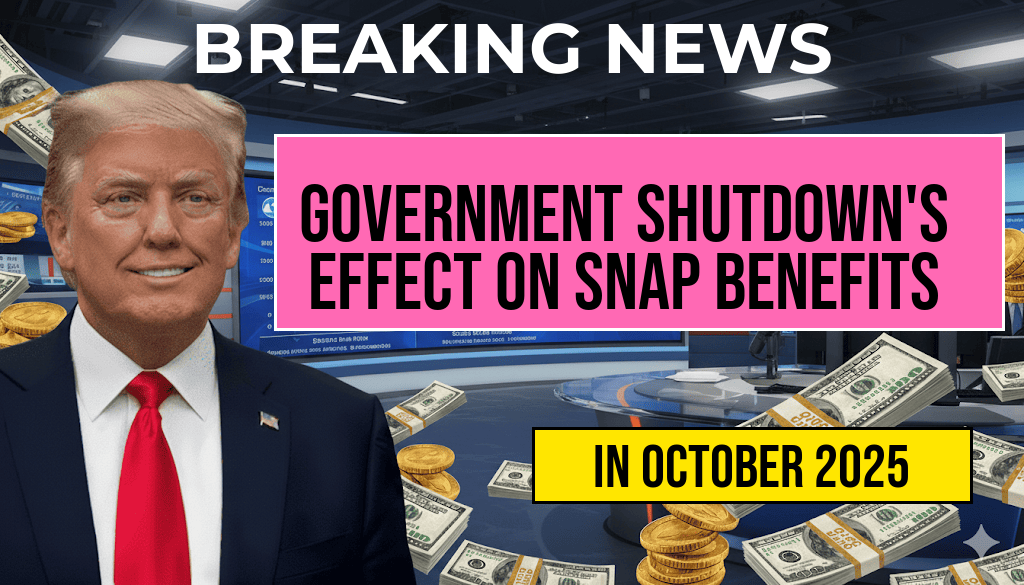The potential for a government shutdown has raised significant concerns regarding the future of the Supplemental Nutrition Assistance Program (SNAP) and food stamp benefits. As lawmakers struggle to reach a budget agreement, millions of households across the United States may face uncertainty in accessing vital food assistance. SNAP, which serves as a crucial lifeline for low-income families, could be severely impacted if federal funding is disrupted. The ramifications of a government shutdown extend beyond immediate food security, affecting local economies and public health. This article delves into how a shutdown could influence SNAP benefits, the measures in place to mitigate these effects, and the broader implications for the community.
Understanding SNAP and Its Importance
SNAP, commonly referred to as food stamps, is a federal assistance program designed to alleviate hunger by providing eligible low-income individuals and families with funds to purchase food. The program is administered by the U.S. Department of Agriculture (USDA) and is crucial for ensuring that millions of Americans have access to nutritious meals. In fiscal year 2023, approximately 42 million individuals relied on SNAP benefits, highlighting its importance in the social safety net.
How a Government Shutdown Could Affect SNAP Benefits
During a government shutdown, funding for various federal programs is halted, leading to widespread uncertainty about the continuation of services. Here’s how SNAP could be impacted:
- Benefit Disbursement Delays: If a shutdown occurs, the USDA may face challenges in processing and distributing benefits on time, causing delays in payments to recipients.
- Application Processing Slowdowns: New applicants may experience significant delays in having their applications processed, leading to a temporary increase in food insecurity.
- Administrative Support Disruptions: Local offices that manage SNAP may be understaffed or closed, complicating access to assistance for those in need.
Current Measures to Address Potential Disruptions
In anticipation of a government shutdown, some measures can be taken to cushion the blow for SNAP recipients:
- Advance Payments: The USDA has previously authorized advance payments to ensure beneficiaries receive funds even during a funding lapse. However, this is contingent on available resources and legal frameworks.
- State Contingency Plans: Many states have developed contingency plans to ensure continuity of services, including potential emergency funding from state budgets.
- Community Support Initiatives: Local food banks and community organizations often step up during crises to provide additional resources and support to families affected by disruptions in SNAP.
Broader Implications for Food Security and Local Economies
A government shutdown not only disrupts SNAP benefits but also poses broader implications for food security and local economies. When families struggle to afford food, local grocery stores and markets may experience decreased sales, leading to a ripple effect throughout the economy. Furthermore, increased food insecurity can result in higher healthcare costs as lack of proper nutrition contributes to various health issues.
Research indicates that every $1 in SNAP benefits generates approximately $1.70 in local economic activity, showcasing the program’s role in stimulating communities. When benefits are delayed or reduced, it can lead to diminished spending in local businesses, impacting jobs and economic stability.
What Recipients Should Know
For SNAP recipients, staying informed is crucial during uncertain times. Here are some steps to consider:
- Monitor Official Channels: Keep an eye on announcements from the USDA and local SNAP offices for updates regarding benefits and services.
- Explore Community Resources: Utilize local food banks, pantries, and community organizations for support if benefits are disrupted.
- Plan for Contingencies: If you anticipate potential delays, consider budgeting and meal planning to stretch resources as far as possible.
Conclusion
The potential of a government shutdown poses a serious threat to SNAP benefits and food security for millions of Americans. Understanding the implications and staying informed about available resources is essential for those who rely on this crucial assistance. As the political landscape continues to evolve, the hope is that lawmakers will prioritize the needs of vulnerable populations to ensure that food assistance programs remain intact.
Frequently Asked Questions
Will a government shutdown affect my SNAP benefits?
Yes, during a government shutdown, there may be delays in the distribution of SNAP benefits. However, many states have measures in place to ensure that eligible households continue to receive assistance.
What happens to food stamp payments during a shutdown?
In the event of a shutdown, food stamp payments may be disrupted, but the extent of the impact can vary by state. Some states may have funds to cover benefits temporarily, while others may not.
Are current SNAP recipients at risk of losing their benefits?
Current SNAP recipients are generally not at immediate risk of losing their benefits due to a government shutdown, but new applications and eligibility reviews may be delayed.
How can I find out about my SNAP benefits if the government is shut down?
You can check your SNAP benefits status by visiting your state’s SNAP website or contacting your local office. They will provide the most accurate and up-to-date information during a shutdown.
Will a government shutdown impact SNAP program eligibility?
A government shutdown does not typically change SNAP program eligibility criteria, but the processing of new applications and renewals may be delayed, potentially affecting access to benefits.

Leave a Reply